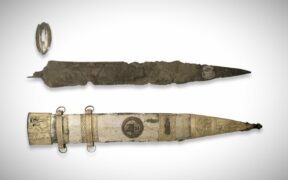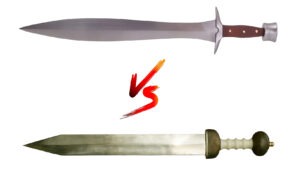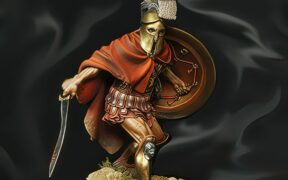Examining the Dimensions and Design of the Gladius
NO AI USED This Article has been written and edited by our team with no help of the AI
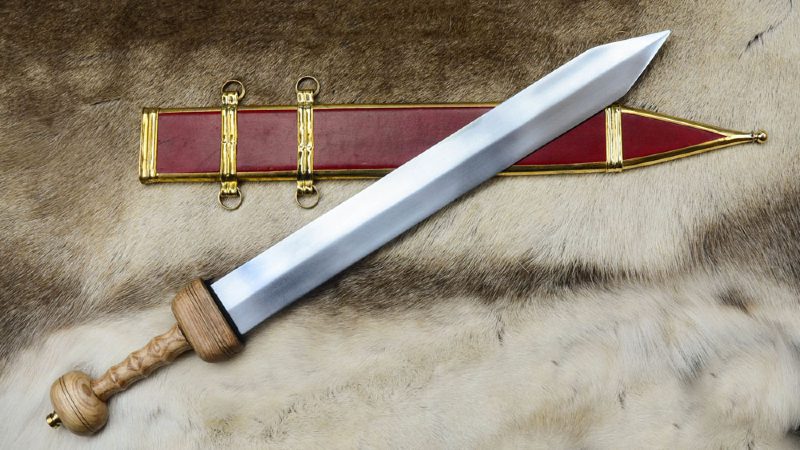
The gladius short sword was a principal weapon of the Roman legionary, designed for close-quarters combat and effectiveness in both slashing and thrusting. Today, this iconic weapon frequently appears in historical reenactments and films. But what did the gladius truly look like, and what factors influenced its distinctive design?
In this article, we’ll delve into the dimensions and design of the gladius, exploring its historical form and the advantages it offered in Roman combat.
Gladius Manufacture: Makers and Methods
During the Republican period, sword manufacture was likely outsourced to civilians, but by the Imperial period, the Roman Army had taken over production. Private sword manufacture also existed, with some Roman citizens—either serving soldiers in legionary workshops or veterans in their own private facilities—producing equipment.
Roman swordsmiths (gladiarii) used the piling technique, forge-welding high-carbon steel edges to softer, low-carbon iron cores, to produce blades that were both strong and flexible. Sometimes, a steel layer was wrapped around an iron core through forge welding.
Features That Made the Gladius Effective in Battle
Designed for close-quarters combat, the gladius’s versatility and functionality on the battlefield can be attributed to several key features, each contributing to its legendary status.
Blade Dimensions: Length and Width
Throughout Roman history, the gladius gradually decreased in size. The earliest type, the gladius Hispaniensis, typically featured blades longer than 60 centimeters (23.6 inches) and about 4.5 centimeters (1.77 inches) wide.
In contrast, the Mainz-type gladius had blades ranging from 42.5 to 59 centimeters (16.7 to 23.2 inches) in length and 3.6 to 7.5 centimeters (1.4 to 2.9 inches) in width. The shortest of the three, the Pompeii-type gladius, had blades measuring between 37.5 and 56.5 centimeters (14.7 to 22.2 inches) long and 3.5 to 7 centimeters (1.37 to 2.7 inches) wide.
Blade Form: Shape and Function
A crucial aspect of the gladius’s blade design was the point. It was long on the Hispaniensis and Mainz types and shorter on the Pompeii type, serving primarily for stabbing. The blade also featured two cutting edges, which were designed for chopping or cutting. Both the tip and blade typically had a diamond-shaped cross-section, though some featured a lenticular cross-section.
Gladius Hispaniensis
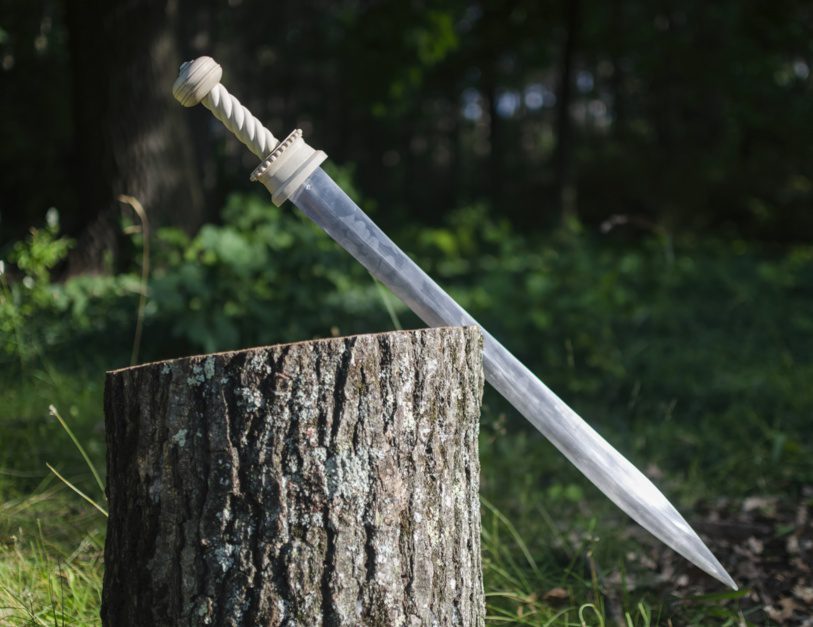
The gladius Hispaniensis was a sword long enough for use by both cavalry and infantry, making it suitable for both chopping and thrusting. Its blade design includes a narrow, slightly waisted shape with rounded shoulders.
Mainz-Type Gladius
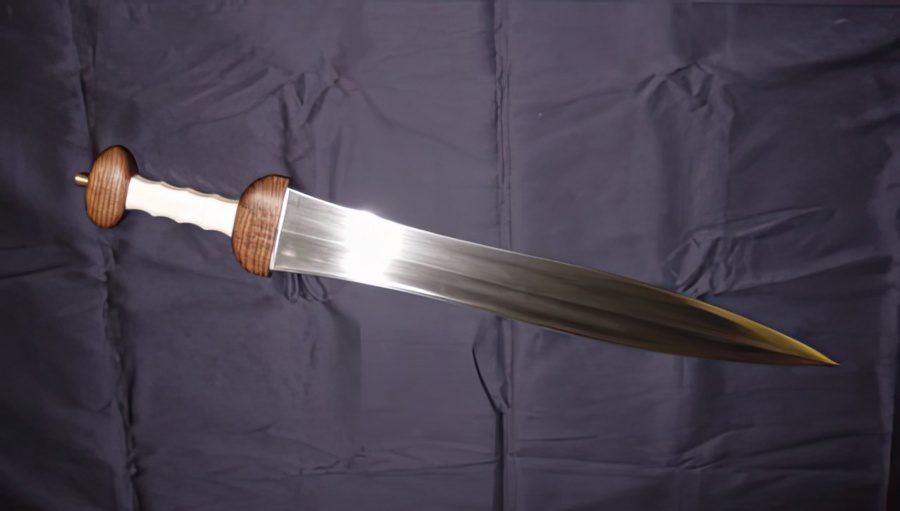
There are several blade forms of the Mainz-type gladius, but they are all quite similar, generally characterized by waisted blades with long points and squared shoulders. Despite being notably shorter than the gladius Hispaniensis, the Mainz-type gladius remained effective for both chopping and stabbing.
Pompeii-Type Gladius
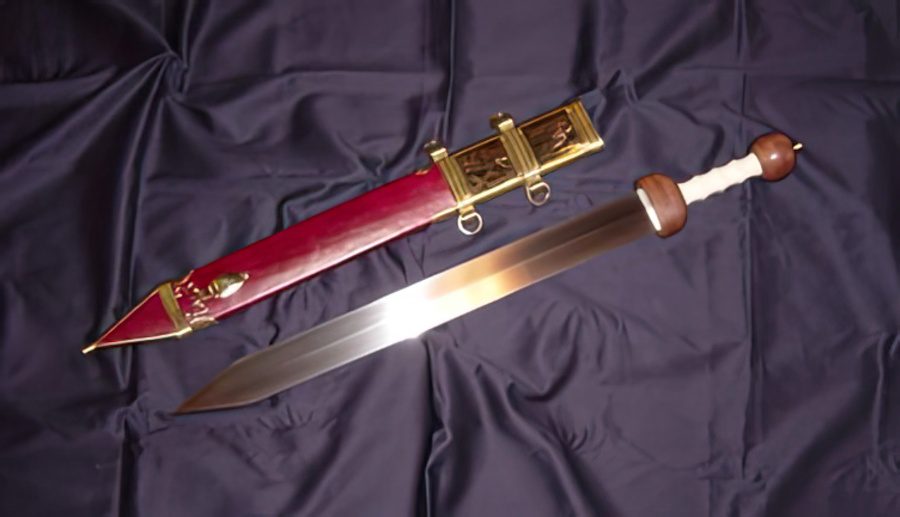
The Pompeii-type gladius is the shortest and lightest of the three, featuring a parallel-edged blade, squared shoulders, and a short point. Although primarily designed for thrusting, it was also used effectively for both cutting and thrusting.
Hilt Design: Ergonomics and Functionality
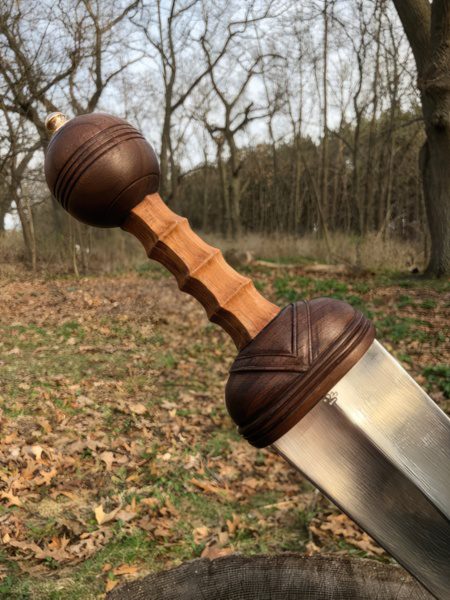
The handle was crucial for the soldier’s control of the sword, and the gladius featured an exceptionally ergonomic design. The hand grip typically measured between 7.5 cm and 9.4 cm (2.9 and 3.7 inches), close to the average width of a modern male hand. The variation in grip lengths among surviving examples indicates that swords were likely adjusted to fit individual users.
Some variation in hand grip size was acceptable, but a grip that was too small could crush the user’s hand, while one that was too large would reduce control. A larger hand grip could lead to reduced contact with the hand guard and pommel, causing the weapon to pivot awkwardly during swings.
The hand grip often featured a ribbed design with three ridges for improved finger placement and grip. Earlier grips sometimes had a spiral pattern and lacked distinct finger moldings. The flattened hexagonal cross-section of the hand grip helped orient the sword in the user’s hand, while the convex shaping of the handguard and pommel base further secured the grip.
Sword Mounting: Craftsmanship and Decoration
Sword mountings for different types of gladius were constructed similarly but varied slightly in materials and decoration. Key components of the hilt included the hand guard with its brass plate, the hand grip, the pommel, and the peen block. The scabbard featured a mouth plate at the top and a terminal knob at the bottom. Decorative metal plates, such as the locket plate and chape, could be added, while suspension bands supported the suspension rings.
Let’s explore the materials and decorations of gladius sword mountings based on their historical forms and archaeological descriptions.
Hilt Construction and Materials
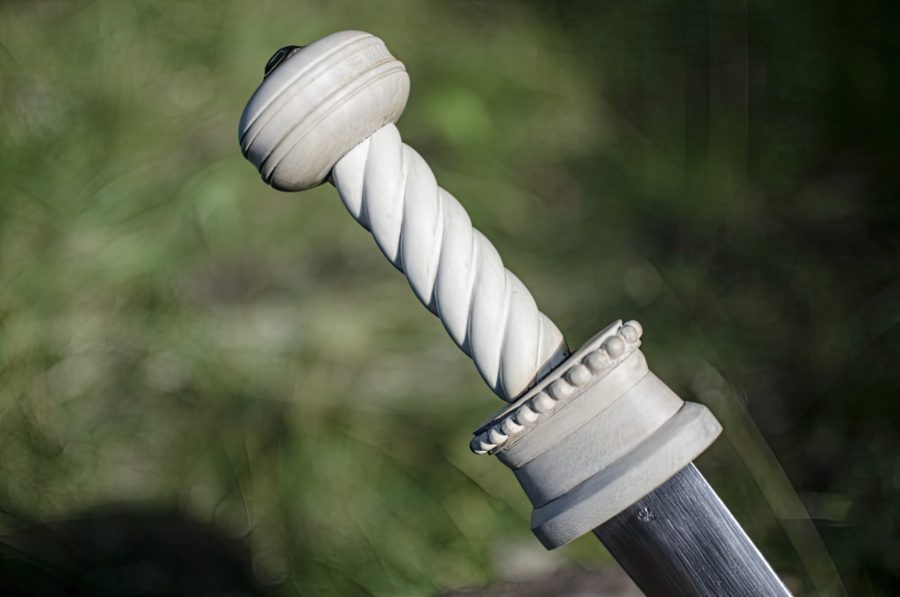
All gladius types had hand grips made from organic materials like bone, wood, or ivory. While most grips featured ribbing, some were simply carved with a spiral design. The Mainz-type gladius typically had an ovoid pommel, whereas Pompeii types were more spherical compared to their predecessors. All types were secured with a top nut or a peen block attached to the tang’s tip.
M.C. Bishop, an archaeologist and expert on Ancient Roman arms and armor, noted in his work that a rare depiction of a gladius Hispaniensis with a distinctive trilobate pommel appears on the tombstone of Minucius, a Roman centurion, from Padua, Italy.
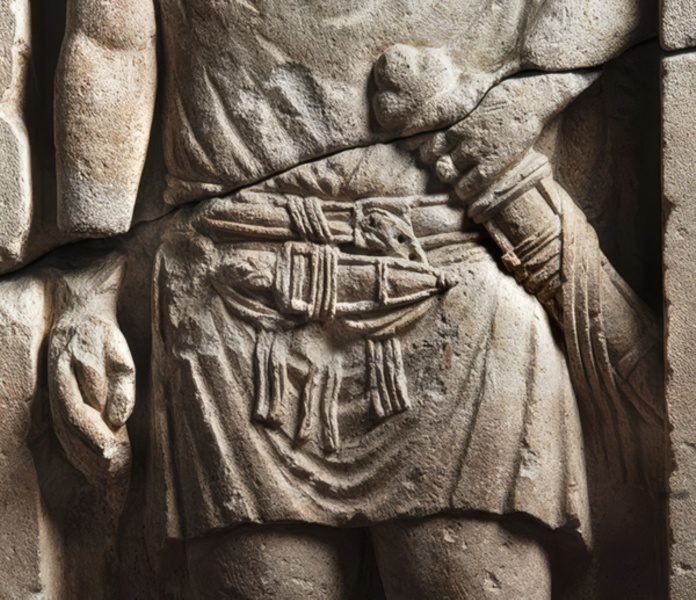
Hand guards were typically made of wood, bone, or ivory with a copper-alloy plate at the base. Mainz and Pompeii-type wooden components were mostly boxwood, with some cherrywood. Some handguards featured carved arcaded patterns, and occasionally, the entire hilt was covered in silver foil.
Scabbard Construction and Decoration
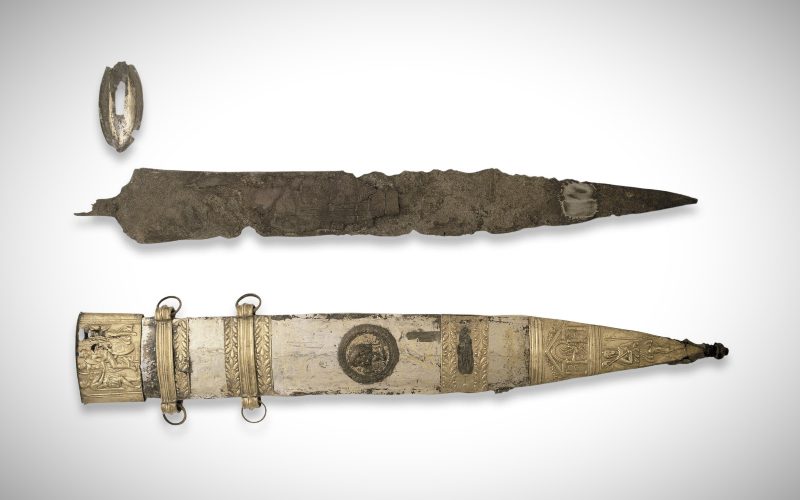
The gladius often had wooden scabbards covered in leather and fully concealed by outer metallic plates. Mainz-type scabbards often featured decorative metal plates, some of which were tinned to mimic gold or silver, while others were embossed, engraved, and adorned with intricate openwork designs.
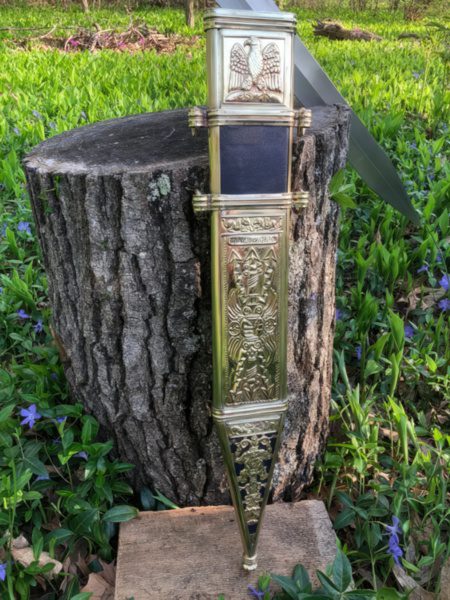
Some decorations featured simple geometric piercings, while others depicted mythological themes. Pompeii-type scabbards were much less varied compared to those of the Mainz-type swords, and some were found with a decorated sword belt. Gladius scabbards often featured two suspension bands with rings and a V-shaped chape at the end.

